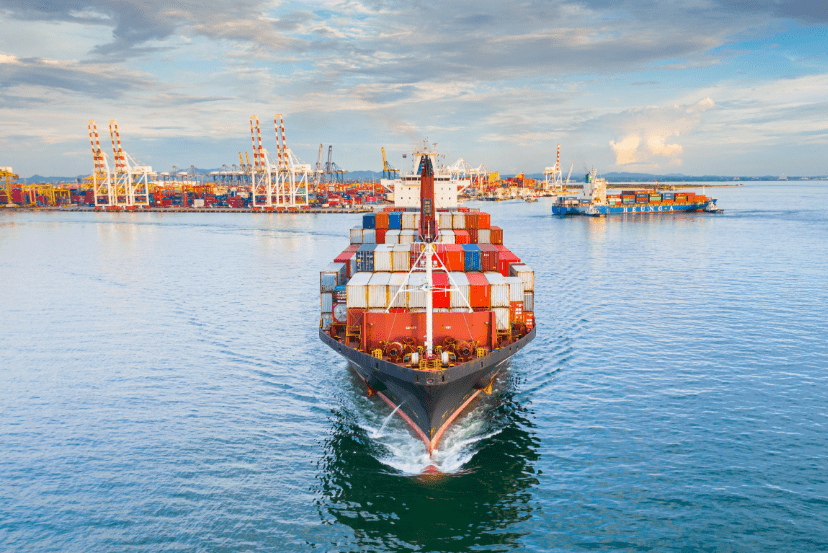Transporting goods across cities, states, or even countries has become much easier with the use of standardized pallets and containers. These containers help importers, exporters, and logistics providers to move and store a wide variety of products efficiently. However, not all goods fit neatly into these containers. Some items are simply too large to be transported using standard methods. These oversized items are known as Over Dimensional Cargo (ODC).
In this blog, we’ll dive deep into understanding what Over Dimensional Cargo is, how it’s categorized, the different types of cargo, the costs involved in transporting ODC, and other important factors that come into play when dealing with such freight.
What is Over Dimensional Cargo?
Over Dimensional Cargo (ODC) refers to any load or item that is larger than the standard size of a vehicle’s cargo deck. In simpler terms, if the cargo extends beyond the normal height, width, or length of the vehicle transporting it, then it’s considered ODC. This could include items that are longer, wider, or taller than the standard dimensions allowed on roads.
For example, if a truck that is 20 feet long is loaded with a tank that is longer, wider, or taller than the truck’s dimensions, this load would be classified as ODC. Such cargo requires special handling, as it doesn’t fit within the normal confines of a vehicle. Typically, flat racks and open-top trailers are used to transport these oversized items.
Understanding Over Dimensional Cargo Limits
Transporting ODC isn’t as simple as loading it onto a truck and hitting the road. There are strict guidelines and limits that must be followed to ensure the safe and legal transportation of such cargo. These limits vary depending on the country or region, but in the United States, the maximum legal load height is generally between 13.5 and 14.5 feet, and the maximum width is 8.5 feet. The width is consistent across most states because it’s based on the width of a typical highway lane.
If the cargo exceeds these dimensions, it is automatically considered over dimensional, and special permits and considerations are required to transport it safely.
Types of Cargo
Cargo, in general, refers to goods or items that are being transported, typically by ship, truck, or plane. There are three main types of general cargo:
- Break Bulk Cargo: This type of cargo is transported in unitized forms such as bags, pallets, drums, crates, or vehicles. Break bulk cargo vessels come in various sizes and are equipped to handle these individual units. Examples of break bulk cargo include steel coils, vehicles, or any other items that are transported individually rather than in containers.
- Containerized Cargo: This is the most common type of cargo today. It involves transporting goods in containers, which are standardized units that can be easily loaded onto ships, trucks, or trains. Containers come in various sizes and types, including refrigerated containers for perishables and tank containers for liquids. Containerized cargo has significantly reduced transportation costs and time, leading to the rapid expansion of global trade.
- Neo Bulk Cargo: This type of cargo includes commodities that are transported in a defined load unit but are not containerized. Examples of neo bulk cargo include logs, heavy machinery, and automobiles. Neo bulk carriers are specifically designed to handle these types of goods.
Costs Associated with Over Dimensional Cargo
Transporting ODC is more complex and expensive than moving standard cargo. Several factors contribute to the costs associated with ODC transportation:
- Cargo Permits: Transporting ODC requires special permits because the cargo exceeds standard legal dimensions. The cost of these permits can vary depending on the size, weight, and nature of the cargo, as well as the route it will take. Permits can cost anywhere from $15 to $70, depending on the state and specific requirements.
- Escorting Vehicles: When transporting large or oversized loads, escort vehicles may be required. These vehicles accompany the ODC to ensure safe passage by alerting other drivers and helping the truck navigate through construction zones, narrow roads, or other obstacles. The cost of escorting vehicles adds to the overall expense of transporting ODC.
- Safety Measures: Safety is a top priority when transporting ODC. Special equipment like flags, warning signs, and lights are used to make the oversized load visible to other drivers. Additionally, transporters may need to display banners reading “Wide Load” or “Oversized Load” on the front and back of the vehicle. These safety measures are essential but also contribute to the overall cost.
Maximum Load Height Considerations
When dealing with ODC, one of the key considerations is the maximum load height. In the United States, the maximum legal load height for ODC is generally between 13.5 and 14.5 feet. This limit is crucial because it ensures that the cargo can safely pass under bridges, overpasses, and through tunnels. Exceeding this height could result in dangerous situations, such as collisions with overhead structures, which is why strict adherence to these limits is essential.
Over Dimensional Routes
Not all roads are suitable for transporting ODC. Specific routes, known as over dimensional routes, are designated for such loads. These routes are chosen based on factors such as road width, height clearance, and the strength of bridges and overpasses. Transporters must obtain special authorization to use these routes, and this authorization often comes with conditions such as specific travel times, required escort vehicles, and the exact path the vehicle must follow.
Choosing the right route is critical for ensuring the safety of the cargo and the integrity of the road infrastructure. Additionally, using the wrong route can lead to significant fines, delays, and even accidents.
Flatbed Over Dimensional Shipments
Flatbed trailers are a common choice for transporting ODC. These trailers have an open deck, which means they don’t have sides or a roof, making them ideal for loading and unloading oversized items. Flatbed trailers are versatile and can handle a wide range of industrial goods, including steel coils, machinery, and large equipment.
However, when using a flatbed trailer for ODC, it’s important to be aware of the legal dimensions and regulations in each state. Flatbed over dimensional shipments must adhere to the same guidelines as other ODC, including obtaining permits, using escort vehicles, and following designated routes.
Conclusion
Understanding Over Dimensional Cargo is essential for anyone involved in logistics, transportation, or shipping. ODC presents unique challenges, from obtaining the necessary permits to choosing the right routes and ensuring safety on the road. The costs associated with ODC are higher than standard cargo, but with careful planning and adherence to regulations, it’s possible to transport oversized loads efficiently and safely.
Whether you’re transporting industrial equipment, construction machinery, or large vehicles, knowing the ins and outs of ODC will help you navigate the complexities of oversized freight and ensure that your cargo arrives at its destination in good condition.Also Read: What is Cargo Insurance? Cargo Insurance Meaning, Types and Benefits





